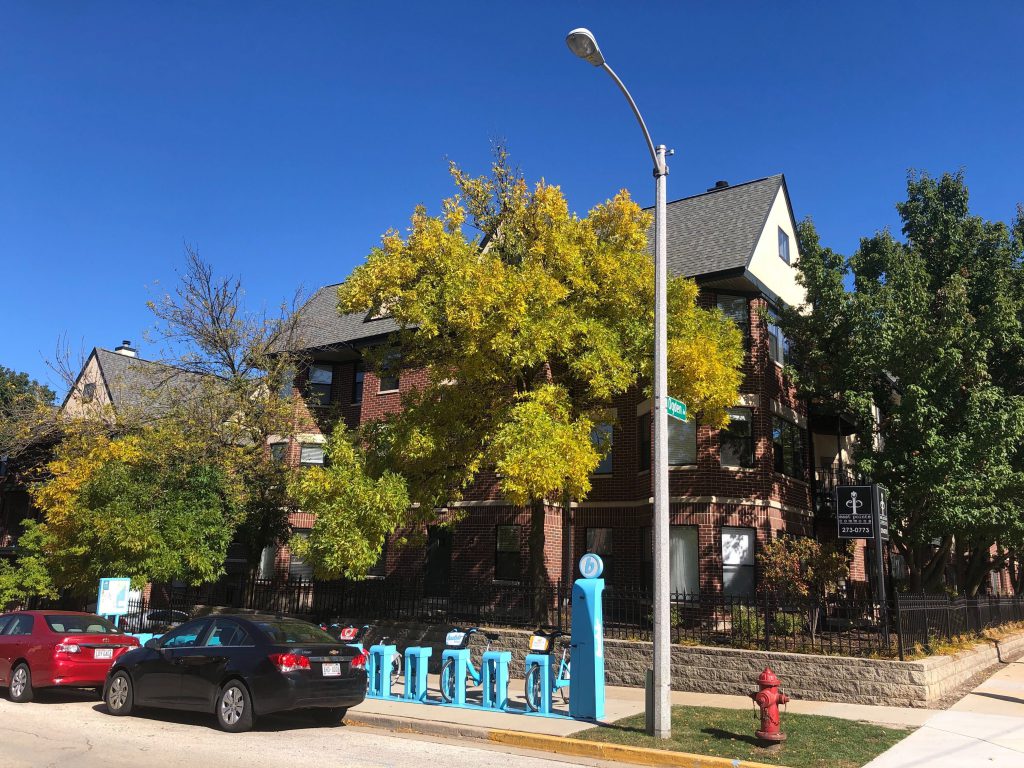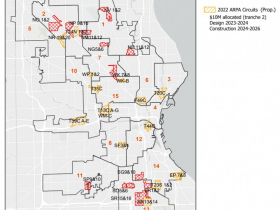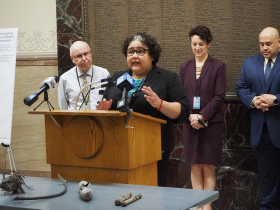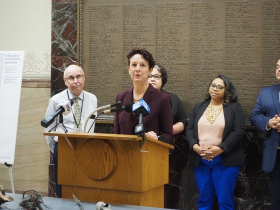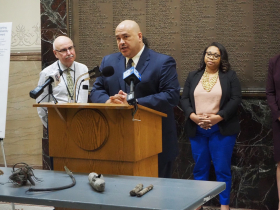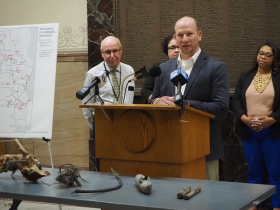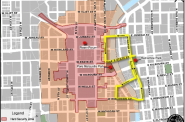Street Lighting Still Burning Issue For City
Lights are frequently out. Council allocates $20 million to replace them, but effort may take years to complete.
Milwaukee’s polarizing street lighting fee, first levied in 2021, is intended to help assure the long-term reliability of the city’s 77,000 street lights and reduce the response time when outages occur. But it would be fair to say it’s not working, at least not yet.
Response times surged this spring and the city, even after boosting pay for electricians, still can’t fill all of its vacancies. Crews recently have needed to work seven days a week to try to keep up with the demand.
“Our January and February was pretty standard… This March has been one of our worst,” said City Engineer and interim Public Works Commissioner Jerrel Kruschke to the Public Works Committee on April 7. Response time to outages peaked at five to six days, then settled down to 1.5 days.
On April 27, Kruschke reported the response time was back up to 3.1 days. “We had a little spike in the number of outages.”
The fee for residents, added to the quarterly bill for water and other services, was instituted with a vision of stabilizing the response time at 24 hours. From 2013 to 2017, electricians restored 99% of all outages within 24 hours. But that dropped to 91% in 2018, 82% in 2019 and 72% in 2020. Vacancies meanwhile surged from 3.6% to 21.7% over the same period.
The main solution to reducing the response time is having a big enough workforce. The city budget calls for 83 electricians, but only 48 are currently employed.
The lighting fee is directly used to pay for the operations of the street lighting system and make electrician pay more competitive in order to recruit and retain workers. The new revenue, according to the Department of Public Works, would allow existing revenue to be used to fund the complete replacement of the worst-performing circuits. The fee generates $9.7 million in revenue per year, and averages $40 per homeowner, charged per feet of street frontage.
“If we opened up a cabinet for you, you would be shocked about how this works,” Kruschke told the Public Safety & Health Committee on April 28.
In late 2021, the council allocated $10 million from its $394.2 million American Rescue Plan Act grant to replace the 13 worst-performing circuits. Kruschke told the public safety committee that those circuits were responsible for 492 of the approximately 3,000 “troubles” (outages) the city experiences annually.
But having the money doesn’t immediately lead to getting the work done.
A request for proposals was issued in April for designing the replacement circuits with construction to take place in 2023 and 2024.
The council, led by Alderwoman JoCasta Zamarripa, is already putting $10 million more towards the effort. She called it “a tremendous accomplishment” in a press conference Tuesday. DPW showed off remnants of damaged circuits including cabling damaged by tree roots, other underground utilities or water infiltration.
The new funding, unanimously approved, will fund an additional 16 circuit replacements, with construction work expected to take place in 2025 and 2026. Kruschke said the replacements will eliminate another 417 annual “troubles.”
“This has been kicked down the road long enough,” said Council President Jose G. Perez.
The effort is backed by the street lighting fee’s biggest critics, Mark Borkowski and Russell W. Stamper, II.
Kruschke said the $20 million, plus the $2.7 million the city budgets annually for replacement, is the maximum amount area contractors could complete for the city in a year. Work includes re-laying wire as well as installing new LED lights.
Even at $20 million a year it would take at least six years to replace all the antiquated series circuits. The entire cost is estimated at $120 million by DPW. Design of a new circuit, each of which varies in size significantly, takes nine to 12 months with construction scheduled for the following year.
And replacing all of the lights with LED lights and multiple circuitry wouldn’t eliminate the need for electricians. “Our maintenance would not go away. It would take a huge burden off our staff, yes,” Kruschke told the public safety committee.
“The fear for us is we have another 10 that are eligible to retire this year,” said Kruschke.
“The electrician position is a very difficult position to fill right now, not only in Milwaukee, but across the country,” said DPW operations director Danielle Rodriguez to the Public Works Committee on April 27.
The fee was intended to enable the city to boost pay to a rate comparable to private market wages. Prior to Act 10, the city indexed its wages to 95% of the local prevailing wage. But that practice halted in 2013. Wages fell to 81% of the prevailing wage, and as a result the city lost electricians and struggled to recruit new ones. The city boosted the pay scale, but the root issue is again rearing its head.
Private wages are rising and the city can’t keep up, a refrain not limited to just electricians, and an issue that is particularly acute because of the specialized training needed to perform the work. Kruschke on Tuesday said he knew it was difficult work that the city required its electricians to perform. Four recruiting events have been held in the past year, with six electricians hired. But two have already left city service.
The revenue-restricted city faces financial challenges in the upcoming years. The street-lighting fee was designed in part to increase city revenue while skirting a state-imposed limit on the property tax levy. But the council’s latest action has a potential consequence.
To fund the next round of street light replacements, it removed $5 million from the budget office’s recommendation of leveraging $80 million in ARPA funding to plug budget holes in 2023. The office, now led by Nik Kovac, is estimating a $95 million structural deficit in 2023.
“We are hoping to tighten the purse strings,” said Zamarripa in an interview after the council vote. Dimitrijevic, the new finance committee chair, said she wanted a more detailed analysis of the deficit and noted other revenue sources could be tapped. The council could also use some of the remaining unallocated ARPA funding, approximately $30 million, to get back to $80 million.
Regardless of what the council and administration ultimately does, the lights on the city’s streets will continue to go on and off, at least for a few more years.
Damaged Infrastructure and Replacement Map
Press Conference
Political Contributions Tracker
Displaying political contributions between people mentioned in this story. Learn more.
- December 13, 2018 - José G. Pérez received $50 from Mark Borkowski
- May 5, 2015 - José G. Pérez received $100 from JoCasta Zamarripa


